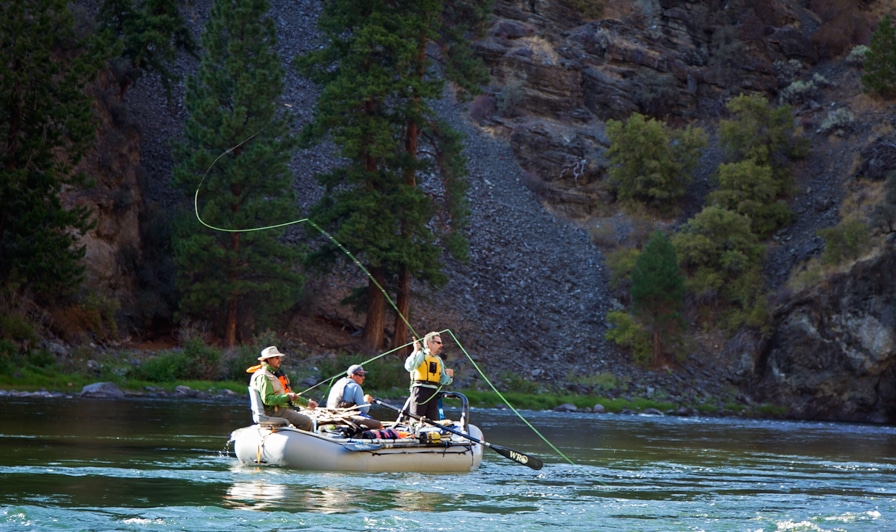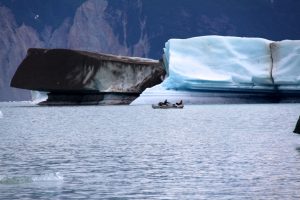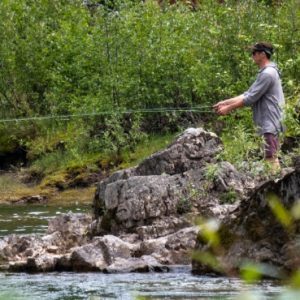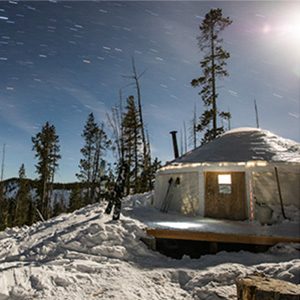Aquatic Insects & Fly Fishing Applications on the Middle Fork of the Salmon River
December 4, 2020
Article written by Jonas Seiler
Every river trip is unique and offers an experience that cannot be replicated. Some offer splashy whitewater, while others offer outstanding scenery, crystal clear water, great hikes, or blue ribbon trout fishing. While all rivers are worth doing, the Middle Fork of the Salmon River is one of the few rivers that brings it all together in one trip. In particular, fishing for wild Westslope Cutthroat trout on the Middle Fork is a classic adventure that allows you to become familiar with some of the more intimate nooks and crannies of the river.
Luckily, the Middle Fork, generally speaking, is a very forgiving river for the novice angler. With the floating season limited to about four months per year and a limited number of floaters during the season, fishing pressure remains relatively light. In addition to light pressure, Cutthroat Trout are not known to be picky and are quick to slurp up a wide variety of nymphs, streamers, and dry flies. During most of the season, a single dry fly is the most effective for Cutthroat and Rainbow.
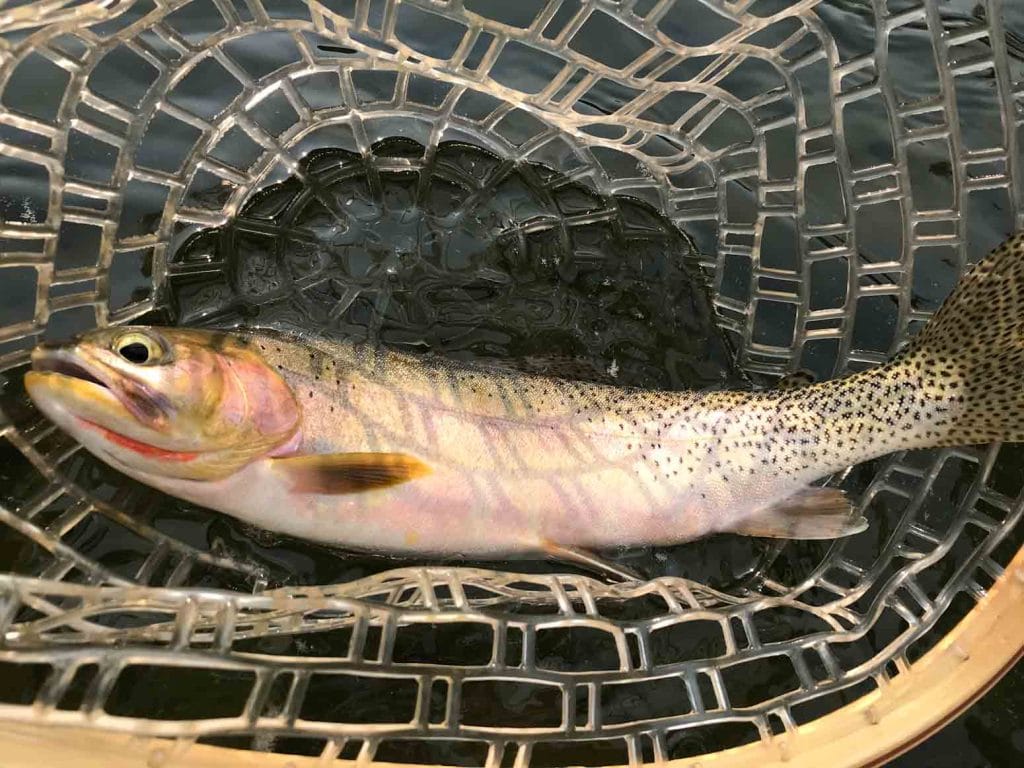
Even so, gaining a basic understanding of aquatic entomology (river bugs) is an essential part of understanding what the fish eat and thus becoming an effective fly angler. With exceptional water quality and pristine habitat, the Middle Fork is home to a wide variety of aquatic insects that feed fish, birds, and other wildlife that live in and around the river. Below, we’ll help you understand the basics for angling success on your Middle Fork trip.
Lifecycle
Stoneflies, mayflies, and caddisflies all have a life history that is tied to water. They live the majority of their lives as nymphs in the river, where they build casings out of pebbles and other debris, hide under rocks, and crawl around, depending on the species. Some are carnivorous, eating other aquatic insects, but most feed on algae and other aquatic vegetation. As they mature, they grow larger and get ready to hatch. When conditions, such as water temperature, flow, and weather, are right, the nymphs hatch, either by rising to the surface or crawling up the banks, and become winged adults that take flight. Each species hatches at about the same time each year. In a matter of hours to weeks after hatching, they mate, lay eggs, and die – all while supporting the rest of the food chain.
Stoneflies
Stoneflies are the kings of the aquatic bug world. Of the common aquatic insects, stoneflies are most sensitive to water pollutants and high temperatures. They thrive in cold, clean, swift streams – just like the Middle Fork. Often, the presence of stoneflies is an indicator of good water quality. If you see stoneflies on your home river, you can be sure that water quality is decent at worst. Stoneflies have two sets of wings, long antennae, and are generally pretty clumsy fliers. They can be easy to spot flying upstream during the hatch, due to their size and clumsy flying pattern. They are also easy to spot as they crawl around on vegetation and rocks around the river. After hatching, adult Stoneflies can survive for several weeks.
As far as fly fishing goes, stoneflies carry a lot of significance because they are larger than most other insects in the river, which means a lot of nutritional value for a trout. Like a cheeseburger for a trout. They spend as long as 3 years in their nymphal stage before hatching, and when they do, the cutthroat on the Middle Fork will pursue these tasty treats recklessly. On the Middle Fork, we have multiple species of stonefly, including the famous Salmonfly (P. Californica). These orange bellied giants hatch beginning in June and often last into late July and can be over two inches long. In addition to Salmonflies, the Middle Fork sees plenty of Golden Stoneflies, which, while slightly smaller than the Salmonflies, get an equally enthusiastic response from the trout. Golden Stones also emerge mostly in June and July.
While fishing dry adult stonefly imitations is one of the highlights of the angling calendar on the Middle Fork and is one of the reasons why July is such a sought after time to go on the Middle Fork, it is possible to fish stonefly nymphs or other dry flies for the entire floating season.
Flies: Yellow & Orange Stimulators size 4-14, Foam Salmonfly Imitations, Rubber Legs, Muddler (twitched), Golden Stone Nymphs
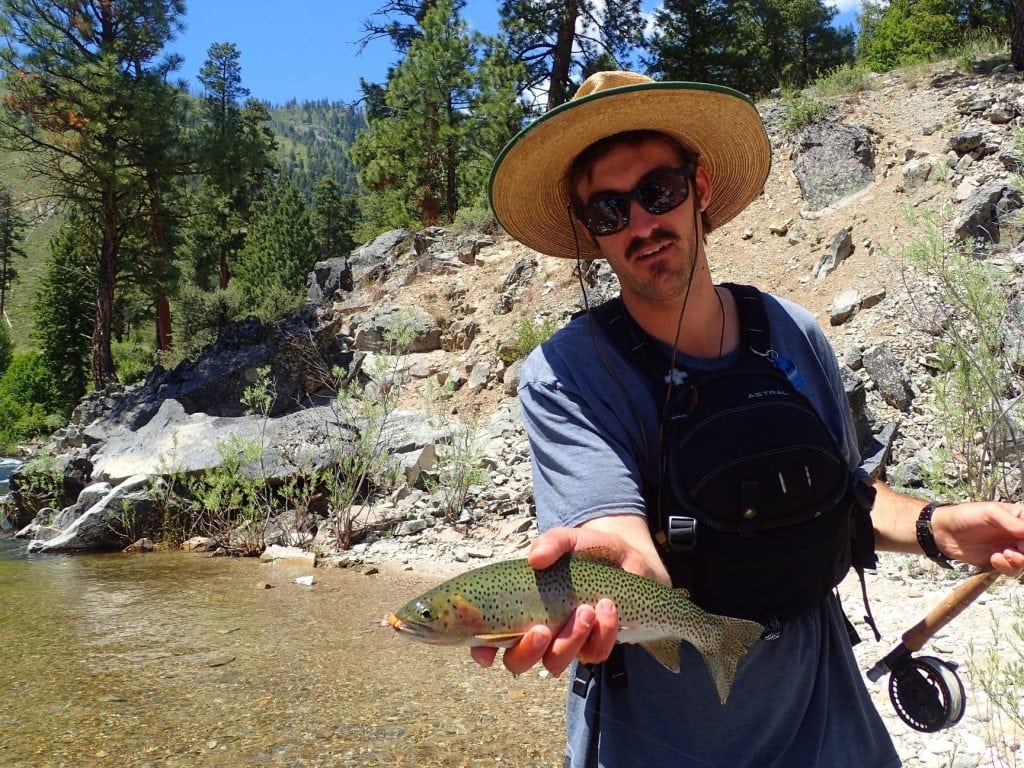
Jonas with a Middle Fork Cutthroat
This June Westslope Cutthroat couldn’t resist an orange salmonfly pattern!
Caddisflies
Caddisflies are the workhorses of many river systems. As far as pure biomass, caddisflies are king. Despite their small size, they can hatch in numbers so large that they are often described as “clouds”. Caddisflies are more tolerant of compromised water quality than Stoneflies or Mayflies. There are thousands of varieties of Caddisflies, and a handful reside in the Middle Fork. For fly fishing purposes, most of them can be imitated with the same patterns of different sizes. In their nymphal stage, Caddis often build little stationary casing ‘homes’ out of pebbles, woody debris, and other things that they find on the river bottom. Other varieties crawl freely. In most rivers, turning over a rock on the river bottom will show caddis casings clinging below.
As adults, they can vary in size from ¼” to over 1”. Caddisflies have long antennae and an oversized set of wings that look like a little tent that covers their slender bodies. While their flight patterns can appear erratic, caddis are strong fliers that can travel several miles. Caddisflies have a limited ability to consume food and water as adults, so they rarely live more than a few days.
Trout love caddisflies. If you could only fish a single dry fly on the Middle Fork, it should be some sort of caddis imitation. Trout often chase a ‘skated’ caddis skittering across the surface, making for exciting takes. They are readily available somewhere on the Middle Fork for the majority of the summer, starting as soon as mother’s day and lasting in some capacity well into October. Caddisflies can be fished either as dry flies or nymphs.
Starting in September, the river starts to see big “October Caddis” that provide great fishing on the lower Middle Fork in September and October. The late season, with less people, cooler water, and beautiful fall weather, is one of the best times to be an angler floating the Middle Fork.
Flies: Elk Hair Caddis 8-16, Goddards Caddis 10-14, Cased Caddis, Foam October Caddis, Hares Ear Caddis Pupa,
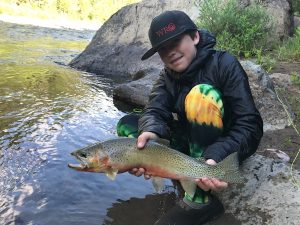
Mayflies
Mayflies are the insects most fly anglers consider the classic symbol of an aquatic insect. Their delicate, picturesque appearance is synonymous with dry fly fishing. They have a single set of wings that protrude from their slender bodies. Mayflies are very diverse, with over 3000 known species and have very diverse life histories. Some prefer swift, shallow water, while others prefer still water. As nymphs, they resemble miniature versions of stonefly nymphs. They vary in size from less than ¼” to over 1”.
Mayflies, like stoneflies, are very sensitive to compromised water quality, and thus, are a great indicator of good water, especially if you observe a variety of different maylfies throughout the spring, summer, and fall. Most mayflies do not have the ability to eat or drink water as adults, so their lifespan as adults can be as little as a few hours, creating a feeding frenzy from the time they hatch to when they die and fall back to the water (aka the spinner fall). With the exception of a slight lull in the dog days of August, some type of mayfly is readily available throughout the summer floating season.
On the Middle Fork, the various mayfly species can generally be imitated by “attractor” mayfly patterns in different sizes. These patterns do a great job of imitating a variety of mayflies, from Pale Morning Duns (PMD), Blue Winged Olives (BWO), baetis, various drakes, duns, and so on. When fishing gets tricky, switching to a smaller mayfly dry fly pattern from a stimulator or other larger attractor pattern can be the key to success. General mayfly nymphs, such as a pheasant tail or hare’s ear, are also some of the most effective dropper flies.
Fishing dry mayfly patterns is a classic experience that every angler should experience, and the Middle Fork offers plenty of opportunity to do so.
Flies: Parachute adams 10-16, Humpy 10-14, Royal Wulff 10-16, Pheasant Tail Nymph 12-18, Hare’s Ear 12-18, Purple Haze 10-18
Other Insects
Although mayflies, stoneflies, and caddisflies make up the majority of the aquatic insects that are relevant to fly fishing, there are a few other bugs to consider adding to your fly box before your Middle Fork trip.
“Terrestrials” are a fancy way to describe any bug that does not have lifecycle origins in the river. Grasshoppers, beetles, ants, crickets, and so on. Starting in mid summer when water levels have dropped to medium levels and terrestrial bugs are fully grown, the fish really start to pay attention to terrestrials. Foam ant, hopper, and beetle flies are essential to have later in July, August, and into September. Again, the Cutthroat are not picky and any buggy pattern will have success. Foam bugs are also perfect to add a bead head dropper fly to.
Midges are a small aquatic bug that is widespread in most rivers. Although they are an important food source for the Middle Fork trout throughout the year when other food sources are not as available, we rarely use midges during the summer float season. They resemble little mosquitos, but don’t bite. Sometimes, a small midge nymph is effective as a dropper. On other rivers where winter and spring fishing are more accessible, being familiar with midge activity can be a big difference maker, especially if you intend to fish dry flies.
Join us in 2021 for a September Middle Fork Salmon Fly Fishing trip.
